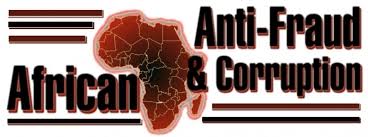Reminders from the Goodyear FCPA Settlement
 FCPA settlements carry with them a basket of compliance and enforcement lessons. The recent Goodyear settlement with the SEC for $16 million carries some important compliance and strategic reminders for ethics and compliance practitioners. Here are the major lessons:
FCPA settlements carry with them a basket of compliance and enforcement lessons. The recent Goodyear settlement with the SEC for $16 million carries some important compliance and strategic reminders for ethics and compliance practitioners. Here are the major lessons:
The Value of Hotlines: The Goodyear investigation began with a hotline call. All too often, everyone rolls their eyes when they think about their hotline. Nearly 80 percent of the calls that come in on a hotline are human resource issues, most of which do not rise to the level of significance.
Goodyear confirms an important point – a hotline can be an invaluable resource for learning about internal issues. The caller obviously trusted that Goodyear would do something in response to the complaint. That is a very good sign – a significant issue was reported, and may not have been, in the absence of a culture of trust and a willingness to raise a serious concern through the hotline avenue.
Due Diligence and Integration for Acquisitions: Both companies involved in the bribery schemes were acquired by Goodyear and subject to due diligence. Goodyear did not discover the bribery activities during the due diligence process. It is very likely that the due diligence did not include an anti-corruption compliance component. If it happened today, rest assured Goodyear and any other company would include an anti-corruption component.
Goodyear’s liability in this context confirms, once again, what practitioners always say – conduct due diligence so you do not “buy” an FCPA violation. Goodyear bought the FCPA investigation and ended up paying for it.
From the facts, it is also clear that Goodyear did not make any effort to formally integrate the acquired companies into the Goodyear internal controls and compliance program. As part of the integration process, many would have suggested that Goodyear conduct post-acquisition audits to verify the absence of corruption problems, given the high-risk operations.
Merger and acquisition compliance in the anti-corruption context is two-fold: Pre-acquisition due diligence; and Post-acquisition integration, including training, financial controls, internal communications systems, and audits for high-risk operations.
Voluntary Disclosure and Cooperation: The SEC has cited Goodyear as a good example of the benefits of voluntary disclosure and cooperation. There is no question that Goodyear earned a disclosure/cooperation discount. Whether that was the right strategic call is hard to tell.
As an alternative, Goodyear could have identified the problem, fired the relevant bad actors, and sold the companies as it is planning to do now. After that, Goodyear could have enhanced its compliance program to ensure that such misconduct does not occur again, adopted a robust due diligence and integration process for future acquisitions, and then just sat on its hands.
 The risk of detection would depend on whether Goodyear felt there was a whistleblower – like the complainant who called the hotline – and whether the whistleblower would go to the SEC to report Goodyear. In the absence of more information surrounding these circumstances, it is hard to determine whether voluntary disclosure and cooperation was the right call. In the end, however, Goodyear certainly earned a valuable discount.
The risk of detection would depend on whether Goodyear felt there was a whistleblower – like the complainant who called the hotline – and whether the whistleblower would go to the SEC to report Goodyear. In the absence of more information surrounding these circumstances, it is hard to determine whether voluntary disclosure and cooperation was the right call. In the end, however, Goodyear certainly earned a valuable discount.















